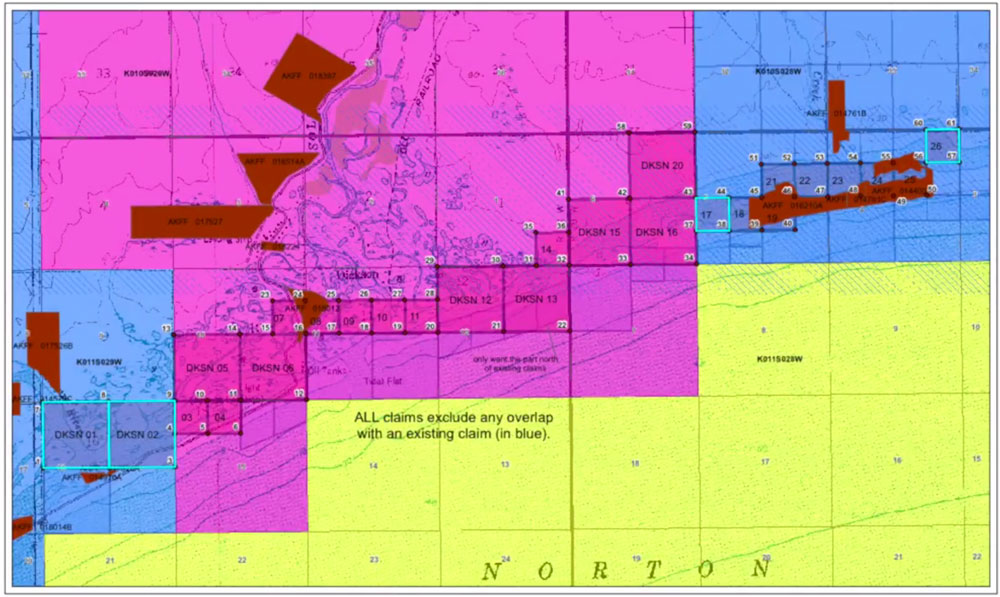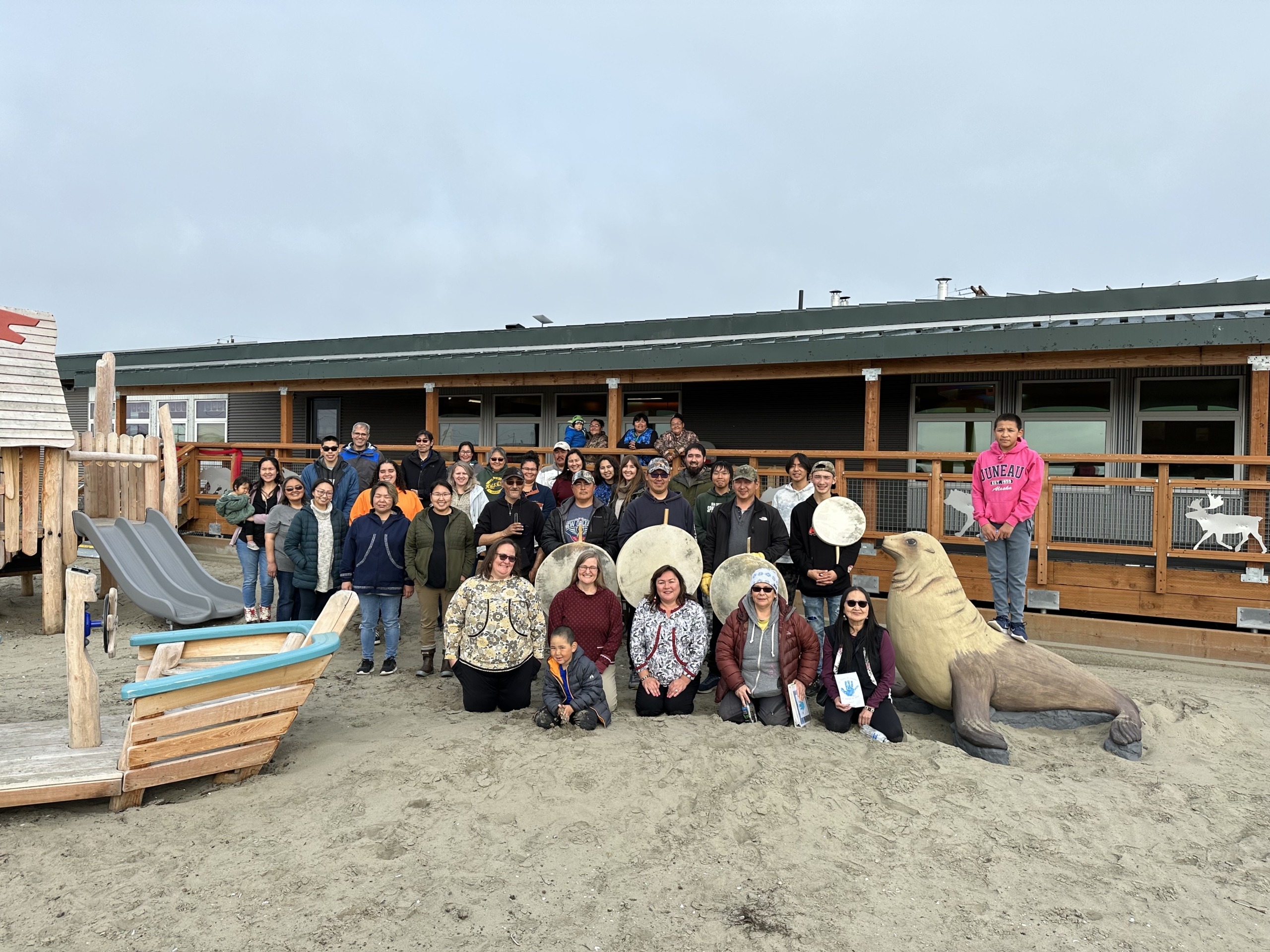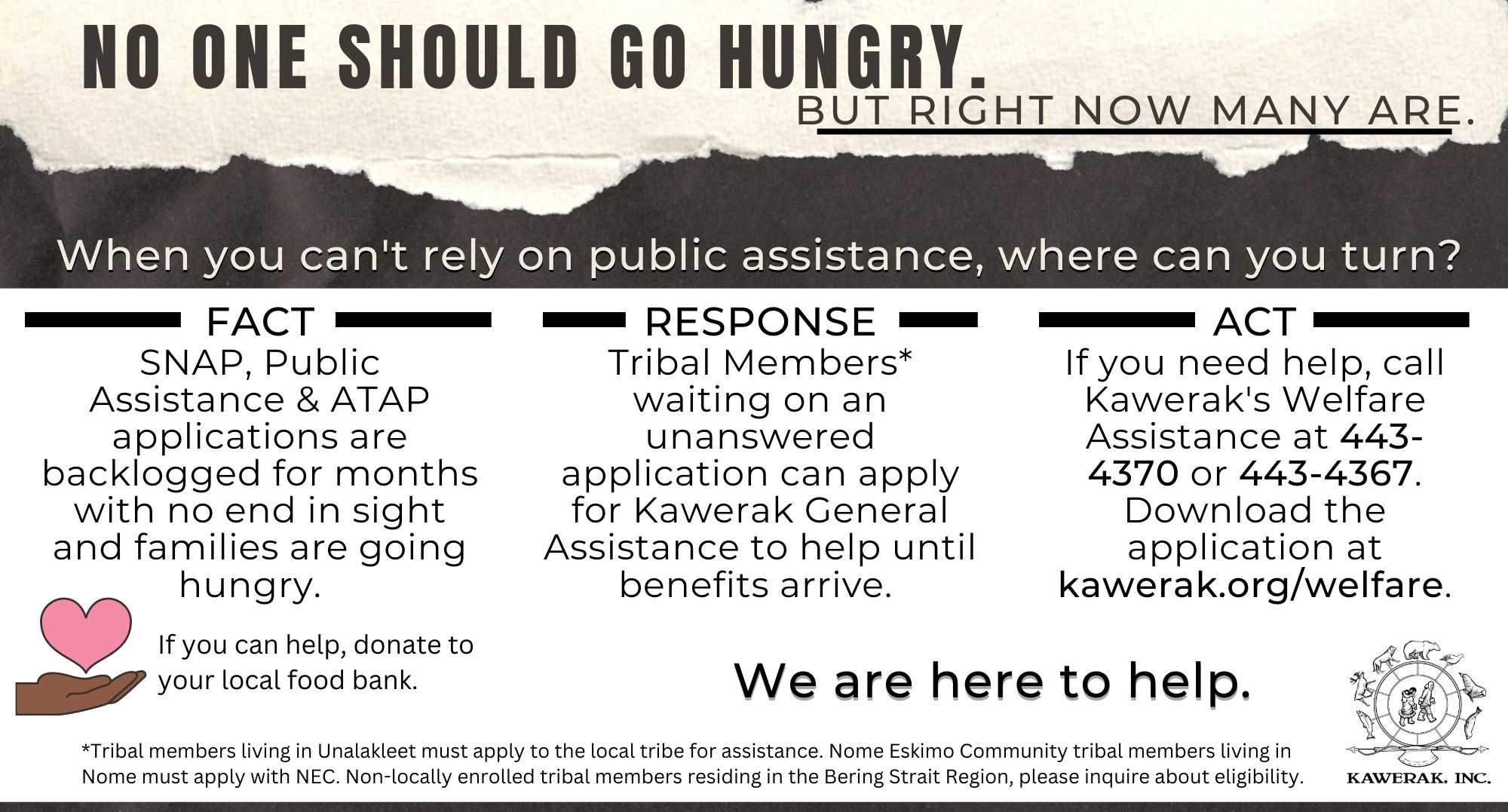FOR IMMEDIATE RELEASE • May 22, 2018
Contact: Tyler Rhodes, COO / tyler@nsedc.com
Brandon Ahmasuk, Kawerak, Inc. Subsistence Resources Program Director / Sub.dir@kawerak.org
Brandon Ahmasuk, Kawerak, Inc. Subsistence Resources Program Director / Sub.dir@kawerak.org
NSEDC, Kawerak & BSNC oppose mining in critical Norton Sound habitat
Entities oppose mining in the Safety Sound, Bonanza Channel and Golovnin Lagoon, areas critical for survival of local salmon stocks and animal life
NOME—Norton Sound Economic Development Corporation (NSEDC), Kawerak, Inc. and Bering Straits Native Corporation (BSNC) join together to oppose mining in the Safety Sound, Bonanza Channel and Golovnin Lagoon where large-scale placer mining permits are being proposed. Knowing all three areas support critical habitat for a variety of species important for subsistence, commercial and recreational uses, the three regional entities unite to protect habitat in areas that should be off limits for large-scale mechanical placer mining and discharge levels.
“These sensitive areas are not only already utilized and necessary for residents in the Norton Sound region but are areas critical for animal and plant species that are relied upon for subsistence and commercial purposes, alike,” Kawerak President Melanie Bahnke said. “To allow large-scale mechanical placer mining in the area would be disastrous to the bird and fish populations that our residents rely upon, along with the very habitat that supports these species.”
At risk are eelgrass beds that provide habitat and a source of food for a variety of species important for subsistence, commercial and recreational uses. Eelgrass beds in the Safety Sound, Bonanza Channel and Golovnin Lagoon provide clean water, cover and feed for invertebrates, as well as the many important fish species and bird populations that feed on those invertebrates. The eelgrass beds also improve water quality by stabilizing sediments and reducing erosion but are highly sensitive to increased sedimentation and removal.
“The areas provide support to one of the most productive migratory water fowl habitats in the world,” Bahnke said. “These areas are used by swans, geese, sandhill cranes, black brant, multiple species of duck, and other migratory shore birds as staging, resting and feeding locations during the annual spring and fall migrations. The birds are not only important for local subsistence users, but also to people who travel to the area from all over the world to view them.”
Along with the migration of waterfowl, large and small, the large-scale mining would affect the critical outmigration of young, juvenile salmon. Estuaries throughout the Seward Peninsula have a strong outmigration of juvenile salmon from mid-June to late July, a significant portion of the summer mining season. The Solomon River and Safety Sound estuaries, along with the Fish River drainage, which flows into the Golovnin Lagoon, are of great importance to the outmigration of young, juvenile salmon.
“Every community throughout the Seward Peninsula relies upon salmon, whether for subsistence or commercial use,” NSEDC Board Member Pat Johanson said. “We cannot support mining operations that will disrupt the fragile lifecycle of our salmon in areas already experiencing salmon declines, and where rehabilitation efforts are taking place.”
NSEDC, along with the Native Village of White Mountain, with funding from the Alaska Department of Fish and Game (ADF&G), have worked since 2005 to rehabilitate chum, coho and Chinook salmon runs in the areas proposed for mining. The rehabilitation efforts consist of collecting and fertilizing eggs from adult salmon, incubating eggs to the eyed egg or fry stages, and ultimately releasing them in areas previously mined. The long-term goal is these juvenile salmon will imprint on currently under-utilized habitats and return as adults to spawn, thereby rehabilitating areas previously disrupted by placer mining.
“For these efforts to be successful,” Johanson said, “it’s imperative that sensitive habitats in the Safety Sound, Bonanza Channel and Golovnin Lagoon remain protected from large-scale mechanical placer mining activities. It simply makes no sense to trade one short-term commercial interest for interests of residents who have relied upon an area for centuries.”
For more information on NSEDC, Kawerak, Inc., and BSNC’s opposition to mining in the Safety Sound, Bonanza Channel and Golovnin Lagoon, contact either NSEDC’s COO Tyler Rhodes at 907.443.2477 or tyler@nsedc.com or Kawerak, Inc’s Subsistence Resources Program Director Brandon Ahmasuk at 907.443.4265 or sub.dir@kawerak.org.
# # #






